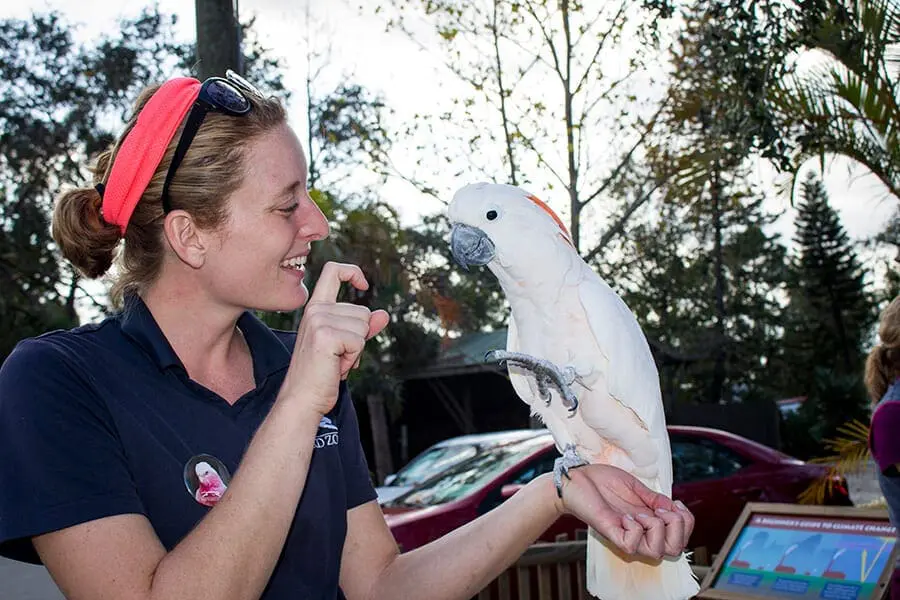

A couple of rainbow lorikeets cozy up in the aviary.
Parrots are perhaps the world’s most recognized and beloved birds. From cockatiels to conures, you’ll find roughly 400 parrot species across five continents. Everything from size and weight to color can vary drastically. Despite this enormous variety, two distinct traits classify a parrot: a curved beak and zygodactyl feet (four toes on each foot with two toes pointing in either direction).
Most parrots prefer the warm climates of Africa, Australia and the Americas. A smaller number are found in snowy regions, such as the kea of New Zealand. Regardless of habitat, they’re typically social and live in flocks. Many take romance very seriously—they are monogamous and spend their lives with only one mate, working together to raise young. They’re omnivores with strong jaws that allow them to snap open nutshells and dig for insects.
Many parrots have faced trouble throughout the years. The Carolina parakeet, the only species native to the eastern United States, spanned from southern New York to the Gulf of Mexico in forests and along rivers. Habitat loss, collection for the pet trade, demand for their feathers for use in ladies’ hats and possibly disease led them to extinction; the last known wild individual was killed here in Florida in 1904.
Unfortunately, history repeats itself. Today, almost a third of the world’s parrot species are facing extinction. The rainforest ecosystems home to many of these birds are shrinking. Climate change and pollution impact resources vital to their survival. Sadly, one of the largest threats is illegal capture for the pet trade.; though the Convention on International Trade in Endangered Species (CITES) bans the sale of wild-caught endangered animals, illegal wildlife markets continue to thrive. Some pet parrots come from breeders, but animal trafficking remains a global issue.

Goofy, our salmon-crested cockatoo, is well-known around the Zoo for behaviors such as whistling, repeating words and even some “hand signs”!
The Zoo is home to 16 species of parrots from all over the world. They’re beloved by the keepers, who work diligently to maintain healthy birds, and guests who stop by to “chat” with them. (Many of our parrots know quite a few words!)
Despite their charismatic charm, parrots are extremely demanding as pets. They need plenty of attention and stimulating enrichment or they may become bored and exhibit signs of distress. Many species live between 40 and 70 years, with some having reached upwards of 100 years of age! It’s important to consider the amount of care and dedication you can provide before committing to a new pet.
These diverse, alluring birds have captured the attention of humans worldwide. To keep them soaring through our skies, you can learn more about conservation and laws protecting birds and use that information to educate friends and family. Support conservation groups, such as World Parrot Trust, who help protect the ecosystems of these high flyers. Wildlife always benefits when we choose to reduce our carbon footprint by recycling, shopping local and using greener energy sources. Together, we can keep parrots around for many more years and Polly will get to eat a lot more “crackers”!
